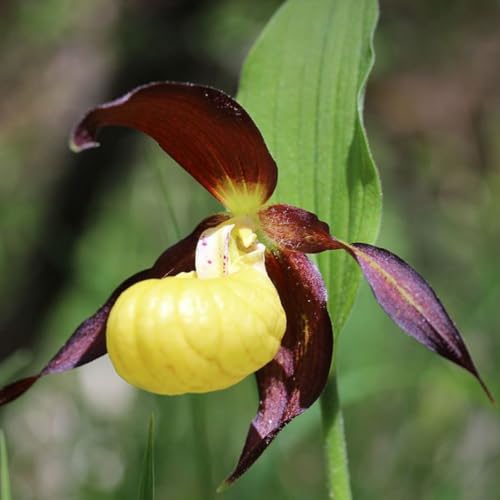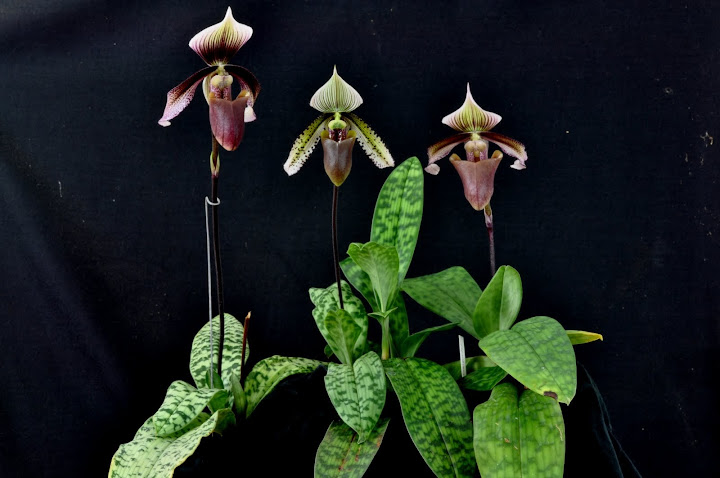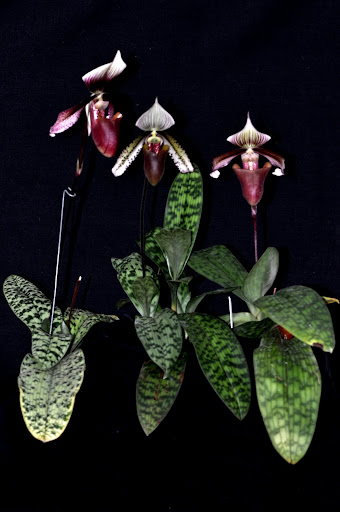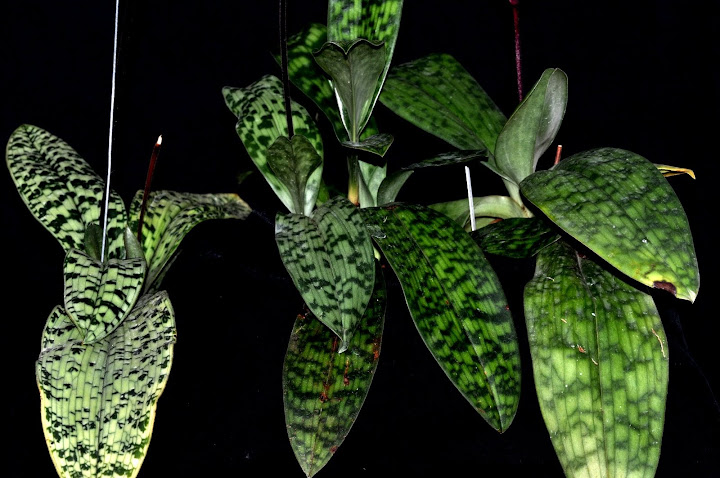You're right, that is different from either "superbiens or curtisii". I am not a taxologist so I have no idea what it means!
You are using an out of date browser. It may not display this or other websites correctly.
You should upgrade or use an alternative browser.
You should upgrade or use an alternative browser.
Paph curtisii and superbiens - the great debate
- Thread starter Leo Schordje
- Start date

Help Support Slippertalk Orchid Forum:
This site may earn a commission from merchant affiliate
links, including eBay, Amazon, and others.
Trithor
Chico (..... the clown)
I think you have to be very careful comparing back to old art work, not because of inaccuracy, but rather because plants were imported in their 10's of thousands, and just as now, great value was placed on those that were slightly different. There is no guarantee that the flower was representative of the batch, or even more concerning the habit at the time of collecting every single plant, and destroying those that they were not going to take in order to prevent another collector from getting them. That would have the effect of eradicating populations which may have been distinct, intermediate or exceptional.
Leo Schordje
wilted blossom
Reichenbach, Day and the artist who did the drawings for Sanders, were excellent botanical artists, and both were trained in horticultural taxonomy. The would take the time to find a typical example, and illustrate that, rather than illustrating the exceptional. Even Hooker and Low were quite accurate in their drawings. A requisite to being a taxonomist in those days, before photography, was to trained in rendering detail drawings that reflected life. These artists can be counted on to do a good job of representing in their drawings and water colors an accurate representation of what was in front of them.
Leo,
it kind of reminds me of the 1980s discussion about the 'lost' sanderianum and how the Reichenbachia print by Moon was somehow a 'fake'. Turned out to be spot on! They took great care IMHO.
it kind of reminds me of the 1980s discussion about the 'lost' sanderianum and how the Reichenbachia print by Moon was somehow a 'fake'. Turned out to be spot on! They took great care IMHO.
The best souce for identifications is:
Paph. curtisii
http://www.neeri-orchids.ch/Neerach/PaphGrossBilderSeiten/Paph_curtisii.htm
Paph. superbiens
http://www.neeri-orchids.ch/Neerach/PaphGrossBilderSeiten/Paph_superbiens.htm
In the last years some "experts" make crosses with this two typs of Paphs. - the identification is difficult....
In the last year the following plant provided for discussion:
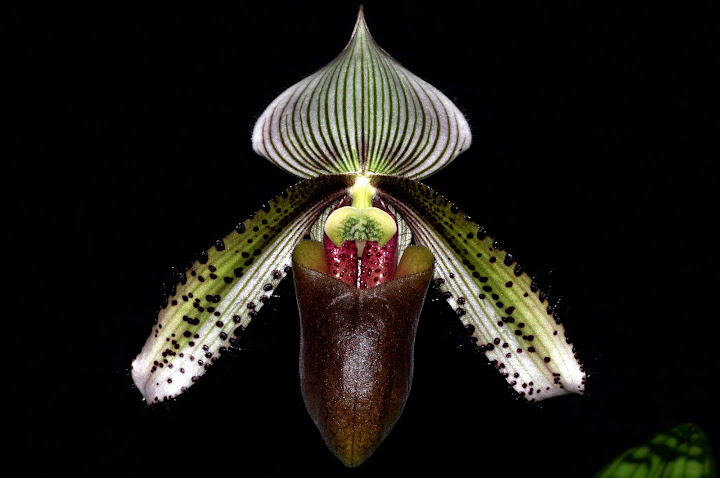
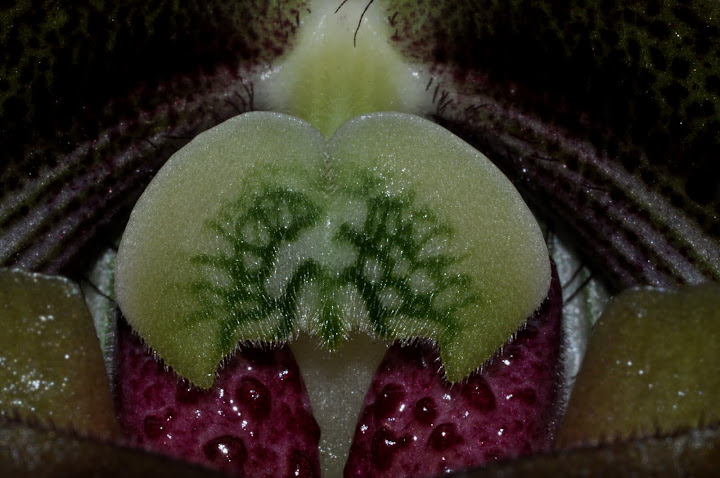
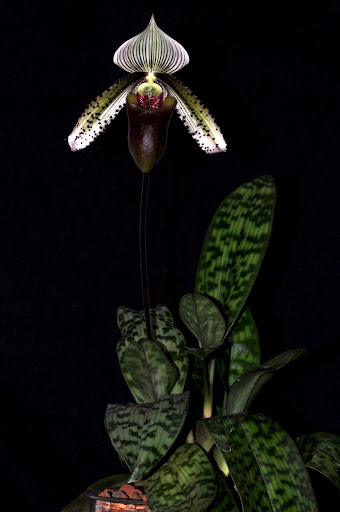
In an article in the German orchidmagazin "Orchideenjournal 4 / 2012" Holger Perner write, that this plant is the "lost" original Paph. superbiens.
On the left side the 136 years old original drawing from John Day - left the plant:

left = P. curtisii - center = "original" superbiens - right = "previous" superbiens
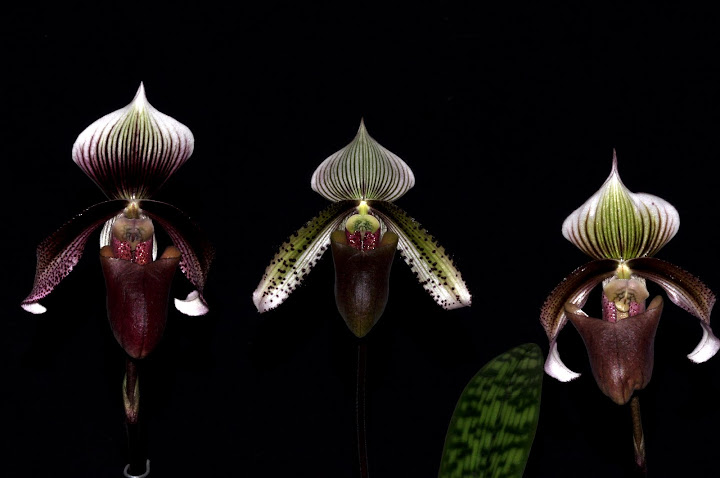
Paph. curtisii
http://www.neeri-orchids.ch/Neerach/PaphGrossBilderSeiten/Paph_curtisii.htm
Paph. superbiens
http://www.neeri-orchids.ch/Neerach/PaphGrossBilderSeiten/Paph_superbiens.htm
In the last years some "experts" make crosses with this two typs of Paphs. - the identification is difficult....
In the last year the following plant provided for discussion:



In an article in the German orchidmagazin "Orchideenjournal 4 / 2012" Holger Perner write, that this plant is the "lost" original Paph. superbiens.
On the left side the 136 years old original drawing from John Day - left the plant:

left = P. curtisii - center = "original" superbiens - right = "previous" superbiens

Very cool. Thanks. I would definitely say the "superbiens" on the right is distinct. Can you post a photo of the foliage of the 3 plants?

$29.99 ($15.00 / Count)
2 Pink Lady Slipper Orchid Plant Live Bud Roots, Live Orchid Plants Bud for Planting, Rare Orchids Plant
RACHEAL LEE BARRETT

$24.98 ($24.98 / Fl Oz)
SeoulCeuticals Chebula Active Serum for Face - Korean Skin Care Anti Aging Natural K Beauty Skincare With Hyaluronic Acid + Spotted Orchid for Healthy, Youthful Glowing Skin 1oz
Digital Beauty Group

$58.99 ($5.90 / Count)
10 Small Lady Slipper Orchids, Pink Orchids Plants Live Lady Slipper, Ornament Orchids Plant Root, No Leaf
KIM MARIE SMITH

$29.00 ($14.50 / Fl Oz)
CoQ10 & Stem Cell Rejuvenation Cream - Fight Oxidative Stress, Reduce Wrinkles, Promote Youthful Skin. Goji Berry & Orchid Extracts. 2 oz.
Advanced Skincare Shop

$31.33 ($3.13 / Fl Oz)
Vitabath Orchid Intrigue Everyday Skincare Set Moisturizing Shower Gel Wash, Reviving Lotion & Exfoliating Body Scrubber Pouf - Alluring Foam Cleanser & Dry Skin Hydration for Women & Men
Class01 USA (we record serial numbers)

$30.49 ($30.49 / Count)
$32.99 ($32.99 / Count)
Body & Skin Care Set, Spa Kit, Self-care Relaxation Gifts, Skin Care Collection with Essential Oils, Spa Gift Basket, Orchid Jasmine Bath and Body Gift Set Pampering, Birthday Home Spa Gifts
hailida

$22.15
$44.00
Understanding Orchids: An Uncomplicated Guide to Growing the World's Most Exotic Plants
Amazon.com

$40.09 ($40.09 / Count)
$45.98 ($45.98 / Count)
hypehouse Allen + roth 8 in. Orchid Pot with Saucer White
Low Price Home Goods

$16.50 ($1.65 / Count)
JMSolution Active Orchid Moisture-Korean facial Skin Care Mask- Hydrating-Orchid extract-Hydrating Moisture -10 sheets for dry skin
MABLEST LLC

$9.95 ($14.63 / Fl Oz)
Eternal Essence Oils 2 Pack 10ml Premium Fragrance Oil - Enchanted Orchid & Water Lily - for Candle, Soap Making, Aromatherapy, Diffusers, Home Care, & Humidifiers
eternal essence oils

$29.99 ($6.00 / Count)
5 Small Lady Slipper Orchids, Pink Orchids Plants Live Lady Slipper, Ornament Orchids Plant Root, No Leaf
KIM MARIE SMITH
SlipperFan
Addicted
I love the "original" superbiens. Wow!
Leo Schordje
wilted blossom
The original drawing by John Day definitely supports my belief that we have the names mixed up in the hobby. And the fact that there is a living plant today, in Holger Perner's collection in Germany that matches the John Day drawing quite well says a lot. The true superbiens is the one in the center. The superbiens of commerce needs to be described and named, whether it is relegated to a variety of curtisii or whether it is given a new name, I will leave that to the taxonomists. But it is clear that what we today call superbiens does not match the John Day description. And no matter what has been printed over the years, it is John Day's description and its associated type specimen that counts. Later opinions don't matter.
John Day's image make it possible that Cymatodes 'Beechiense' is really the hybrid it was originally labelled as.
And the Paph superbiens var dayanum 'Mem. Clarence Schuber' is not that far away from Day's original drawing. Even the foliage of 'Mem Clarence Schubert' plant resemble the foliage of the Holger Perner new superbiens.
Thanks UweM, you have shed a lot of light on this.
John Day's image make it possible that Cymatodes 'Beechiense' is really the hybrid it was originally labelled as.
And the Paph superbiens var dayanum 'Mem. Clarence Schuber' is not that far away from Day's original drawing. Even the foliage of 'Mem Clarence Schubert' plant resemble the foliage of the Holger Perner new superbiens.
Thanks UweM, you have shed a lot of light on this.
SlipperFan
Addicted
Interesting! Thanks.
The middle leave look intermediate between the other 2..........
Thanks for the foliage photos. The leaves on the middle (original) superbiens are more similar to the v. curtsii on the left than the one on the right, at least to me. 
Leo Schordje
wilted blossom
Foliage patterns are not "conservative traits" so are not usually used as key indicators to define a species, but foliage patterns can and are included in the constellation of supporting traits that go with recognizing a species, especially in the field. So, I'm not sure what to think about the foliage.
Has anyone here seen the 'type' superbiens in the middle offered for asle here in the USA? 
SlipperKing
Madd Virologist
No, just superbiens 'Mem. Clarence Schubert AM/AOS
SlipperFan
Addicted
Has anyone here seen the 'type' superbiens in the middle offered for asle here in the USA?
I wish!
Leo Schordje
wilted blossom
Has anyone here seen the 'type' superbiens in the middle offered for asle here in the USA?
When I was first starting to collect Paphs, back in the early 1980's I had a couple from Ray Rands, that more or less were like the middle superbiens. But they did not survive the test of time, I didn't know enough about growing Paphs then. Ray Rands only imported one batch, I doubt if there are any survivors from that importation I have not seen nor heard of one since. In those days, were were all looking for the dark color curtisii type. That superbiens just wasn't spectacular enough to be interesting. Who knew?
If I knew then what I know know I'd have an incredible Paph collection. But, Rick Lockwood and Ray B and Bill Argo hadn't invented K-Lite yet, nor did Al Gore get around to inventing the internet. We actually corresponded by US Mail. Amazing times those were.
Telephones. 
Similar threads
- Replies
- 2
- Views
- 1K
- Replies
- 37
- Views
- 3K
- Replies
- 2
- Views
- 358





















